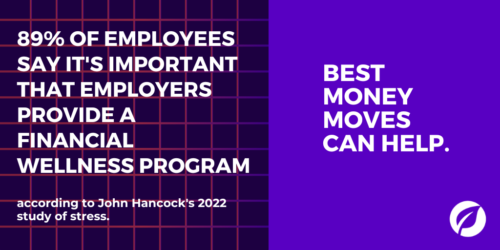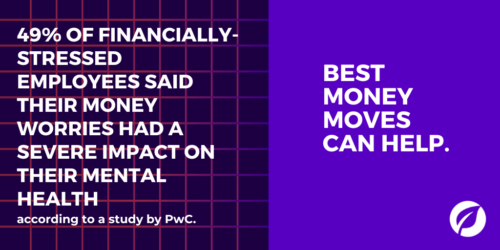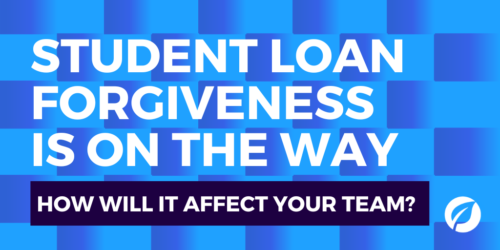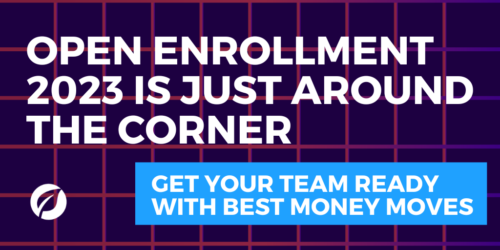
Financial Wellness Platforms: How To Launch the Best One for Your Employees
Employees are feeling the heat. According to John Hancock’s 2022 study of stress, 89% of employees said it was important that employers provided a financial wellness program and 74% said a financial wellness program would help reduce their stress.
Choosing and implementing the right financial wellness platform for your company is critical for reducing employee stress and increasing productivity. Here are 3 steps a company needs to ensure a successful financial wellness program.
1. Evaluate your team’s need for financial wellness platforms.
In order for a benefits program to be successful, it needs to align with what employees want. A great way for employers to find out what their employees want is by conducting a needs assessment. These can be done in the form of personal interviews or questionnaires.
A recent trend in employee benefits has been an increased emphasis on financial wellness. 68% of employees said they would rather have financial wellness benefits than an extra week of vacation, per a Betterment report. Implementing a financial wellness platform is a great way for employers to signal to their employees that their wants and needs are a top priority.
2. Compare financial wellness platforms to find a comprehensive solution.
The most successful financial wellness platforms will include a wide array of tools and resources. Some of the best will include:
- Personalized solutions. Personal finance is a wide-ranging topic that can affect many areas of life. According to a PWC study, the most requested employee benefit is a financial wellness program that grants access to unbiased counselors. However, Best Money Moves grants access to trained, accredited professionals that are tailor-made to help each individual.
- An easy-to-use interface. It can be a big leap for many employees to ask for help on their personal finances and it can be overwhelming to figure out where to begin. According to PWC, 41% of financially stressed employees said they were too embarrassed to ask for assistance on their personal finances. Best Money Moves lends a helping hand and provides detailed instructions on where to start and how to use our services.
- Intuitive tools. One of the most important components of a financial wellness platform is the tools made available for employees to use. According to a Sofi study, 62% of employees requested budgeting tools as a part of their wellness package. The Best Money Moves platform provides a simple and effective budgeting tool that takes user data and personalized solutions. In order to ensure a successful program, the employer has to take extra steps in the form of emails and meetings to ensure their employees have a full grasp of their benefits.
3. Take time to implement your chosen program
It’s integral to introduce a plan that can be easy for employees to comprehend. According to TIAA’s 2022 Financial Wellness Survey, 9 in 10 employees with high financial wellness scores reported that they understand their program very well compared to 4 in 10 with low financial wellness scores. In order to ensure a successful program, the employer has to take extra steps in the form of emails and meetings to ensure their employees have a full grasp of their benefits.
Also, it’s beneficial to have metrics within the programs that show employers how often their employees are interacting with the program.
Best Money Moves is a mobile-first financial wellness solution designed to help employees meet their most top-of-mind financial goals. With budgeting tools and personalized money coaching, users can easily receive comprehensive financial advice right from their phones.
Focused on user-friendliness, Best Money Moves is designed to bring financial wellness resources right to the fingertips of employees. Our dedicated resources, partner offerings and 700+ article library make Best Money Moves a leading benefit in improving employee financial well-being.
To learn more about Best Money Moves Financial Wellness Platform, let’s schedule a call. Contact us and we’ll reach out to you soon.









